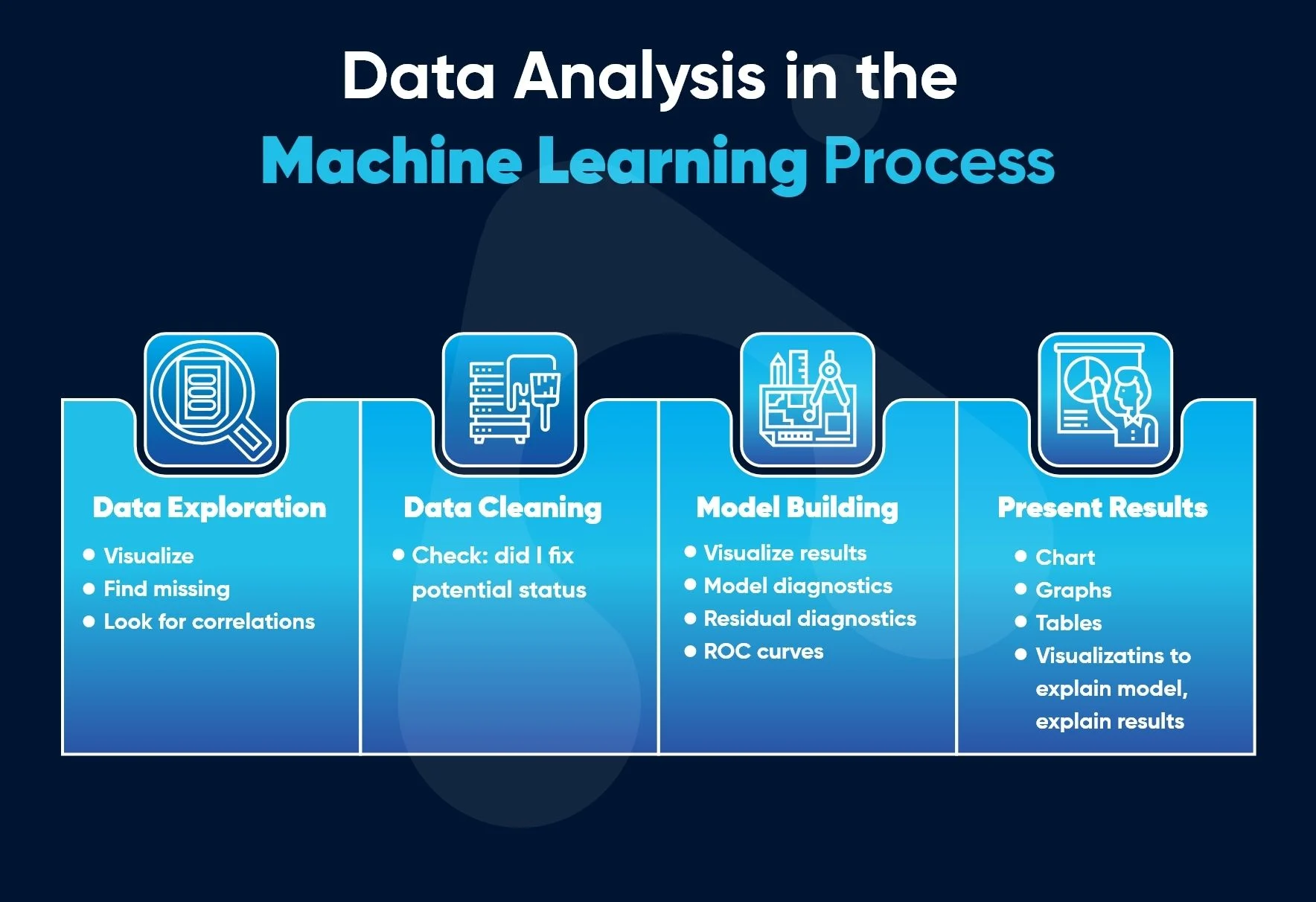How Machine Learning Software Is Changing Data Analysis by revolutionizing the way data is processed and interpreted. Machine learning algorithms are enabling data analysts to uncover patterns and insights that were previously impossible to detect with traditional statistical methods. This technology is allowing for more accurate predictive modeling and decision-making based on large and complex datasets. As a result, businesses and organizations are able to make more informed choices and optimize their operations. Furthermore, machine learning software is automating repetitive data analysis tasks, freeing up analysts to focus on more strategic and creative aspects of their work.
1. The Rise of Machine Learning Software
Machine learning software has revolutionized the way data analysis is conducted. This type of software uses algorithms and statistical models to enable a computer system to progressively improve its performance on a specific task. It has the ability to automatically learn and improve from experience without being explicitly programmed, making it a powerful tool for data analysis.
Machine learning software is being used in various industries, including healthcare, finance, marketing, and more. It has the capability to analyze large and complex datasets, identify patterns, and make predictions, ultimately helping businesses and organizations make informed decisions based on data-driven insights.
2. Automation of Data Analysis Processes
One of the key benefits of machine learning software in data analysis is the automation of processes. Tasks that would typically require significant time and effort from data analysts, such as data cleaning, feature selection, and pattern recognition, can now be automated using machine learning algorithms. This automation not only saves time and resources but also allows for more comprehensive and accurate analysis of data.
By automating these processes, machine learning software enables data analysts to focus on more complex and strategic aspects of data analysis, such as developing and refining models, interpreting results, and deriving actionable insights from the data.
3. Improved Accuracy and Predictive Capabilities
Machine learning software has significantly improved the accuracy and predictive capabilities of data analysis. By utilizing advanced algorithms, machine learning software can identify patterns and trends within data that may not be apparent through traditional analysis methods. This enables more accurate predictions and insights, which can be invaluable for businesses in making strategic decisions.
Furthermore, machine learning software has the ability to continuously learn and adapt to new data, improving its predictive capabilities over time. This dynamic nature of machine learning allows for more reliable and up-to-date analysis, providing businesses with a competitive edge in their decision-making processes.
4. Handling of Big Data Challenges
With the exponential growth of data in today’s digital age, businesses are faced with the challenge of analyzing and deriving meaningful insights from large and complex datasets, often referred to as big data. Machine learning software is equipped to handle these challenges by efficiently processing and analyzing massive volumes of data at a speed and scale that would be unfeasible for human analysts.
By leveraging machine learning algorithms, organizations can uncover hidden patterns and correlations within big data, leading to valuable insights that can drive business strategies and innovations. Machine learning software is, therefore, instrumental in unlocking the potential of big data and turning it into actionable intelligence.
5. Personalized Recommendations and Decision Support
Machine learning software is increasingly being used to provide personalized recommendations and decision support in various applications, such as e-commerce, content streaming, and healthcare. By analyzing user behavior and preferences, machine learning algorithms can offer personalized product recommendations, content suggestions, or treatment plans, tailored to individual needs and interests.
These personalized recommendations not only enhance user experience but also drive engagement and conversion rates for businesses. Additionally, in the healthcare industry, machine learning software can assist healthcare providers in making informed decisions by analyzing patient data and recommending personalized treatment options based on historical outcomes and medical research.
6. Ethical and Privacy Considerations
As machine learning software continues to advance, it is important to address ethical and privacy considerations associated with data analysis. The use of machine learning algorithms raises concerns about bias, fairness, and transparency in decision-making processes, especially when used in sensitive domains such as lending, hiring, and law enforcement.
Furthermore, the increasing reliance on machine learning for data analysis necessitates robust data privacy measures to protect sensitive information from unauthorized access or misuse. It is crucial for organizations to implement ethical guidelines, transparency, and accountability measures when deploying machine learning software for data analysis to ensure responsible and ethical use of data.
7. Integration with Business Intelligence Tools
Machine learning software is increasingly being integrated with business intelligence tools to enhance data analysis capabilities. By incorporating machine learning algorithms into business intelligence platforms, organizations can gain deeper insights from their data, uncover hidden patterns, and make more accurate predictions to support decision-making processes.
These integrated solutions enable businesses to leverage the power of machine learning for advanced analytics while seamlessly integrating with existing business intelligence workflows. This integration empowers users with the ability to explore and visualize data, create interactive dashboards, and gain actionable insights through the combination of machine learning and business intelligence tools.
8. Democratization of Data Analysis
The availability of machine learning software has contributed to the democratization of data analysis, allowing individuals with varying levels of technical expertise to harness the power of advanced analytics. With user-friendly machine learning platforms and tools, non-experts in data science can perform complex analyses, build predictive models, and derive insights from data without extensive programming knowledge.
This democratization of data analysis empowers business users, decision-makers, and analysts across different domains to explore and interpret data more effectively, leading to informed decision-making and data-driven strategies. As a result, organizations can foster a data-driven culture and capitalize on the potential of their data assets with greater accessibility to advanced analytical capabilities.
9. Continuous Innovation and Advancements
The field of machine learning and data analysis is characterized by continuous innovation and advancements, leading to the development of more sophisticated algorithms and techniques. As researchers and practitioners continue to push the boundaries of machine learning, new approaches and methodologies are emerging, further enhancing the capabilities of machine learning software for data analysis.
These advancements contribute to the evolution of data analysis practices, enabling more accurate predictions, deeper insights, and more efficient processing of data. With ongoing innovation, machine learning software is poised to continue transforming the landscape of data analysis and driving new possibilities for leveraging data in diverse industries.
10. Future Implications and Opportunities
The widespread adoption of machine learning software for data analysis is expected to have far-reaching implications and opportunities in the future. From enabling more personalized customer experiences and driving operational efficiencies to advancing scientific research and healthcare outcomes, the impact of machine learning on data analysis will continue to shape various aspects of society and industry.
Moreover, the integration of machine learning with emerging technologies such as the Internet of Things (IoT) and edge computing presents new avenues for real-time analytics and decision-making. As organizations continue to harness the power of machine learning software, the potential for innovation and transformative impact on businesses and society at large is boundless.
How Machine Learning Software Is Changing Data Analysis
| Traditional Data Analysis | Machine Learning Data Analysis |
|---|---|
| Relies on manual input and predefined rules | Automatically learns and adapts from data |
| Requires human intervention for decision-making | Can make autonomous decisions based on patterns |
| Limited in handling large and complex datasets | Efficiently processes big data for insights |
| May overlook subtle correlations and trends | Identifies intricate relationships within data |
Machine learning software has revolutionized data analysis by enabling automated learning and decision-making from complex and large datasets. Unlike traditional methods, machine learning can uncover subtle patterns and relationships within data, leading to more accurate and efficient analysis.



